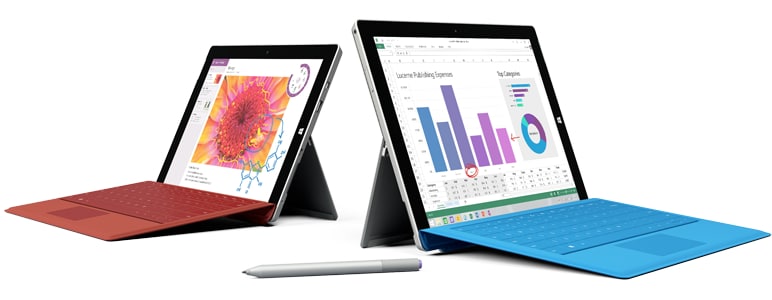-
What are the first steps toward a hybrid data centre?
Networking is the backbone of any data centre and that is true in a hybrid data centre as well. We cannot look to bridge the data centre without creating the connection from on premises to the cloud.
-
5 different types of data in a hybrid data centre
In the data centre we can break down the requirements into a few high-level categories. Block data, which is primarily our virtual machine data; unstructured data, which is our file data; database or structured data; multimedia data; and data backup.
-
How NetApp brings the hybrid data centre to life
Over the decades, NetApp has been at the forefront of data innovations and bringing the hybrid data centre to life. They have partnered with the biggest public cloud vendors to be a preferred choice for performance and price.
-
A better way to store cold data
Typically, a large majority of data for companies is cold. This is true in the sense that users create files or files are created through their software, which are used for 30-40 days and then rarely accessed after that.
-
Backing up data in a hybrid data centre
In Canada, rising ransomware attacks in 2022 have accelerated the need for new security solutions that streamline backup and DR plans across not just the data centre, but the cloud as well.
June 02, 2022
A Hybrid Approach to Optimizing Your Data Centre
While we embrace what public cloud vendors are bringing to the table, we recognize there is still a great need for localized resources. A hybrid data centre with a multicloud strategy is what 90 percent of large organizations are moving towards.

The public cloud has been at organizations’ front of mind for several years now. CEOs and business leaders are looking to the cloud to innovate and increase velocity on projects. This brings a great many challenges to organizations that they need to now understand their data centres’ application, networking, storage, security and disaster recovery strategies in a whole new light.
The traditional data centre is increasingly becoming a satellite site and the primary workloads are moving to the hyperscalers. A question that often gets asked at this point is if going full cloud is the best fit. At CDW, while we embrace what the public cloud vendors are bringing to the table, we recognize there is still a great need for localized resources. A hybrid data centre with a multicloud strategy is what 90 percent of large organizations are moving towards.
What are the first steps toward a hybrid data centre?
When it comes to first steps to this strategy, many IT organizations have by now already started with the Microsoft Office 365 product suite. They are now faced with the daunting question of what is next. This is where the foundation is laid to start the true hybrid environment. Validating that your tenant is following best practices to ensure security and governance in the cloud is first on the list.
Networking is the backbone of any data centre and that is true in a hybrid data centre as well. We cannot look to bridge the data centre without creating the connection from on premises to the cloud. Depending on your requirements there are a few ways to easily approach this task. A site-to-site VPN connection is a quick way of connecting to your public cloud of choice. Another option is a dedicated connection such as a direct connect or an express route to the desired hyperscaler. ExpressRoute connections don't route through the public internet, providing users with more reliability, faster speeds, consistent latency and higher security. Leveraging partners like Equinix for their Fabric network to provide a dedicated on-ramp to the cloud can accelerate your connection.
5 different types of data in a hybrid data centre
As we move on from the networking aspect, data centre workloads become the focus. In the data centre we can break down the requirements into a few high-level categories. Block data, which is primarily our virtual machine data; unstructured data, which is our file data; database or structured data; multimedia data; and finally, backup data.
How we approach these sets of data to optimize the environment and get more out of our data centres is sometimes a challenge. Fortunately for IT organizations, companies like NetApp have been working with data for the past 30 years. NetApp has a concept of creating your data fabric so that companies can deliver data when and where it is needed to be. NetApp can protect and secure your data with traditional snapshots, but also by layering on SnapLock and SnapMirror, allowing IT to instantly create copies of their data in real time that is immutable and replicated offsite quickly and efficiently.
How NetApp brings the hybrid data centre to life
Over the decades, NetApp has been at the forefront of data innovations and bringing the hybrid data centre to life. They have partnered with the biggest public cloud vendors to be a preferred choice for performance and price. NetApp’s simplified management allows IT to seamlessly manage the data from on-prem to the cloud with the same tools they use today.
NetApp is transitioning from a data storage company into a true data management company with simple solutions like Cloud Volumes Ontap, which enables disaster recovery solutions or cloud migrations with a snap of the finger. These new tools move data securely into the cloud to have new cloud native workloads access the corporate data, accelerating productivity and innovation.
A better way to store cold data
If they’re looking to maximize their on-premises data centre, companies need to first understand their data. Typically, a large majority of data for companies is cold. This is true in the sense that users create files or files are created through their software, which are used for 30-40 days and then rarely accessed after that. This cold data is the reason organizations are buying more and more primary storage every five years.
Leveraging the hybrid cloud data centre and data tiering cold data from costly on-prem storage to cost optimized cloud storage is a perfect solution to curb this growth. NetApp includes tools built into their software. Running an Inactive Data Report through NetApp will give users increasing insights into their data. From this report organizations can enable fabric pools and tier data directly from on-prem to low-cost object storage in the cloud. To the users this data will look and feel like it is local when navigating folder structures. By leveraging these tools, IT can provision more workloads on current devices or reduce costs for future renewals.
As storage costs come down and data tiering takes centre stage, we see a shift from spinning disk to all flash or all NVME solutions, which can provide that mission-critical sub-millisecond latency for all workloads, not just subsets. Companies like Pure Storage in high-end storage solutions also have cloud block storage to seamlessly replicate data to the cloud from the block files.
Backing up data in a hybrid data centre
Moving away from the primary storage, we get into the secondary storage space, which is largely comprised of organizations’ backup infrastructure and data. Legacy solutions built on media servers, target storage and tape are costly to maintain and are generally forklift upgrades when they become end of life or are outgrown.
Vendors like Cohesity have burst onto the scene to take advantage of these inefficiencies in the data centre. By taking a hyperconverged infrastructure (HCI) approach to data management, organizations can eliminate their aging tier 2 data infrastructure, saving the cost of refreshing a multivendor environment.
In addition, enabling backup tiering to the cloud is faster, safer and meets IT RPO and RTO faster than tape, all while enhancing BCP, DR, data governance and auditing requirements. Cohesity then takes it further with their cyber resiliency and immutability features that reduce the blast radius from a ransomware attack. Cohesity's threat defence architecture leverages AI powered in real time to detect anomalies in your data sets, to ensure IT can respond quicker and recover uninfected data faster. IT needs to plan for cyberattacks now, it's not a matter of "if" you will be a target but a matter of "when" you will be targeted.
In Canada, rising ransomware attacks in 2022 have accelerated the need for new security solutions that streamline backup and DR plans across not just the data centre, but the cloud as well.
Story by Ryan Beauchamp, customer driven architect helping clients dive into hybrid IT solutions to increase efficiency. Ryan is a Principle Solution Architect at CDW focusing on hybrid cloud, HCI, VDI and data centre solutions.
